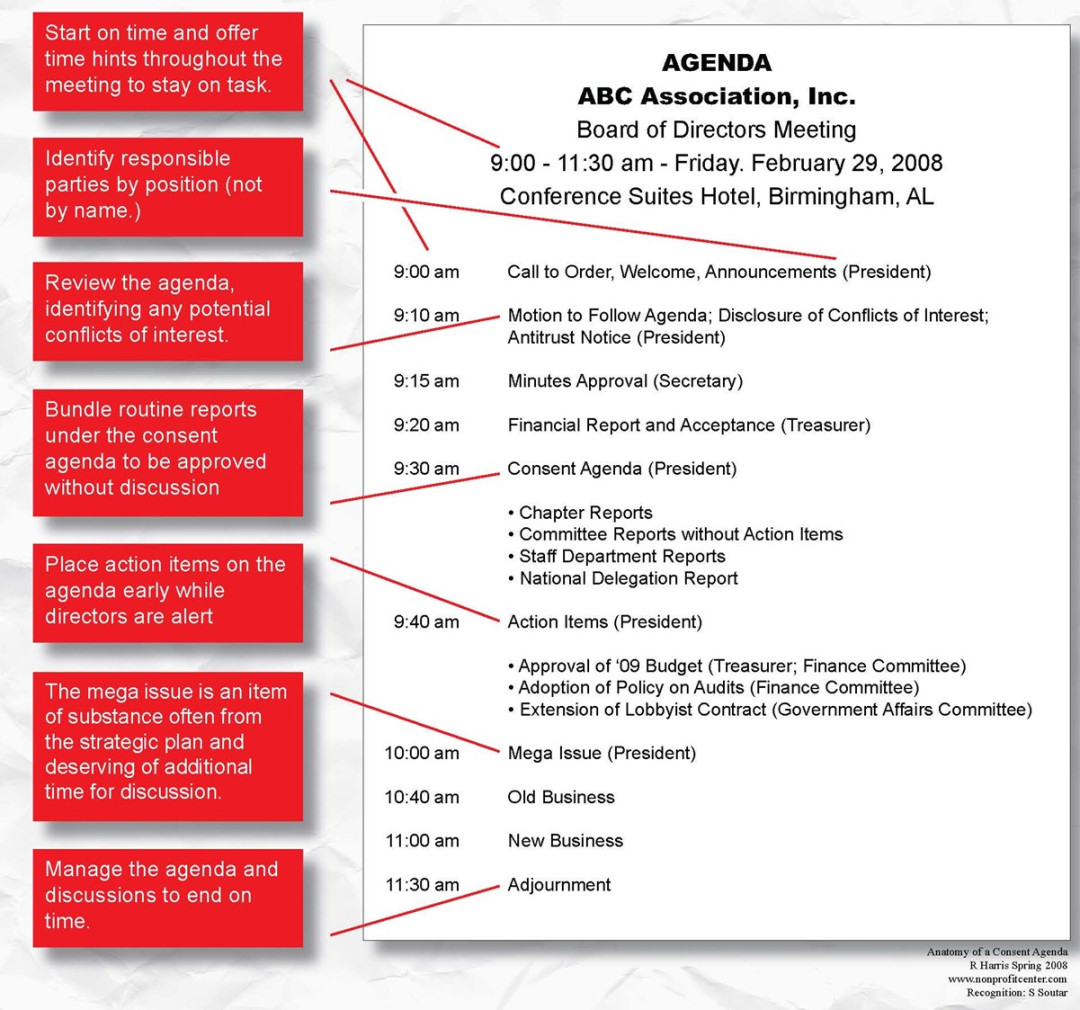Understanding the Consent Agenda Template
A Consent Agenda Template is a structured document used in formal meetings to streamline discussions and expedite decision-making. It typically includes routine items that are expected to be approved without significant debate. By organizing these items in a standardized format, the Consent Agenda Template can enhance efficiency and focus the meeting on more complex or controversial issues.

Key Components of a Professional Consent Agenda Template
When designing a Consent Agenda Template, it’s essential to include the following components:
1. Meeting Title and Date: Clearly state the name of the meeting and the date it is being held. This information should be prominently displayed at the top of the template.
2. Agenda Items: List all the items that will be addressed under the Consent Agenda. Each item should be concise and specific, providing a clear understanding of the topic to be discussed.
3. Supporting Documentation: If applicable, indicate the availability of supporting documentation for each agenda item. This could include Reports, proposals, or other relevant materials.
4. Recommended Action: Specify the recommended action for each item on the Consent Agenda. This might be approval, rejection, or further discussion.
5. Approval or Disapproval: Provide a clear mechanism for members to indicate their approval or disapproval of each agenda item. This could be a simple checkbox or a space for written comments.
6. Meeting Minutes: Include a section for the meeting minutes, which will be recorded during the meeting and later distributed to attendees.
Design Elements for Professionalism and Trust
To create a Consent Agenda Template that conveys professionalism and trust, consider the following design elements:
1. Clean and Consistent Layout: Use a clean and uncluttered layout that is easy to read and navigate. Ensure that all elements are aligned and spaced consistently.
2. Professional Typography: Choose fonts that are professional and legible, such as Arial, Times New Roman, or Calibri. Avoid using excessive fonts or decorative styles that can detract from the document’s professionalism.
3. Appropriate Color Scheme: Select a color scheme that is visually appealing and professional. Consider using a combination of neutral colors, such as black, white, and gray, with a limited number of accent colors.
4. Clear and Concise Language: Use clear and concise language throughout the template, avoiding jargon or technical terms that may be unfamiliar to some attendees.
5. Branding Elements: If applicable, incorporate your organization’s branding elements, such as your logo, colors, and fonts. This will help to create a consistent and professional look.
6. White Space: Use white space effectively to improve readability and create a visually appealing design. Avoid overcrowding the template with too much text or graphics.
7. Accessibility: Ensure that the Consent Agenda Template is accessible to all attendees, including those with disabilities. This may require using larger fonts, higher contrast, or alternative formats.
8. Version Control: Implement a version control system to track changes to the Consent Agenda Template over time. This will help to ensure that all attendees are working with the most up-to-date version.
9. Distribution and Storage: Determine how the Consent Agenda Template will be distributed to attendees and stored for future reference. Consider using a secure online platform or a physical distribution method.
Conclusion
By carefully considering these design elements, you can create a Consent Agenda Template that is both professional and effective. A well-designed template can help to streamline meetings, improve decision-making, and enhance the overall efficiency of your organization.